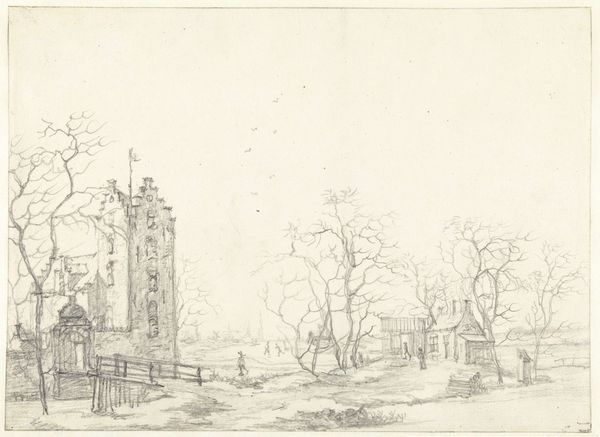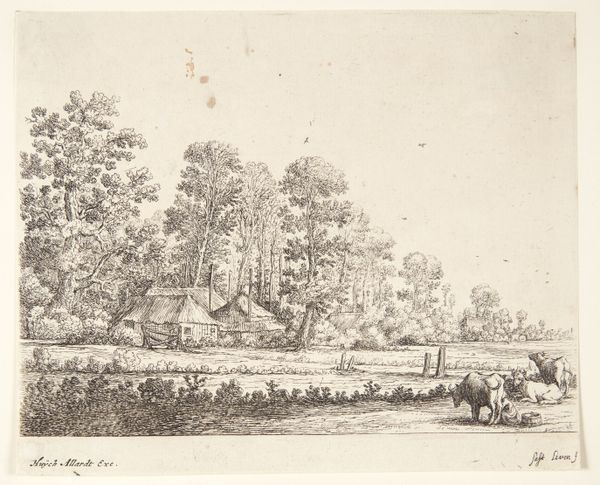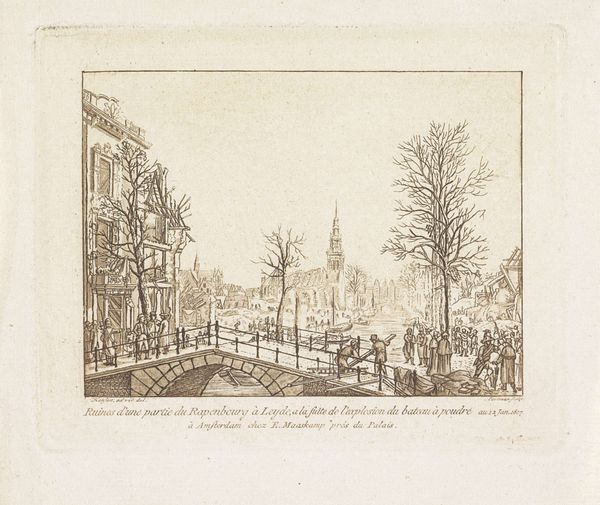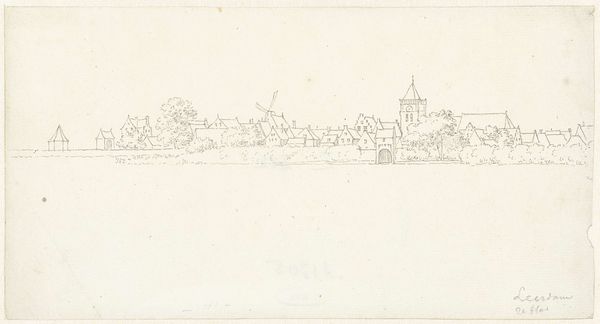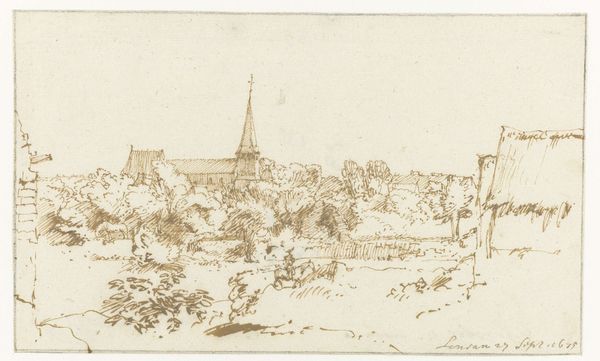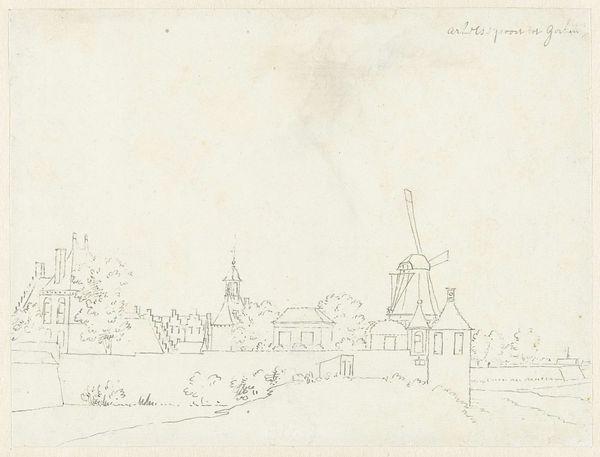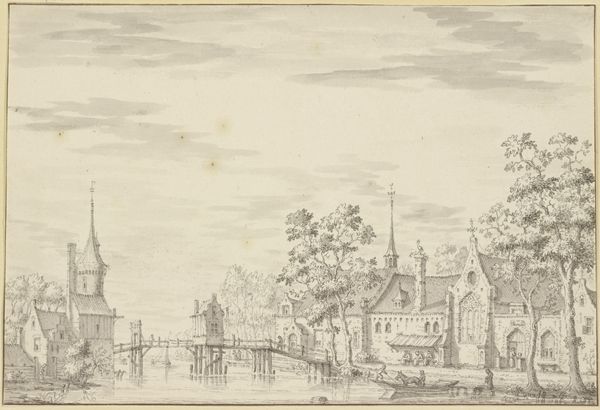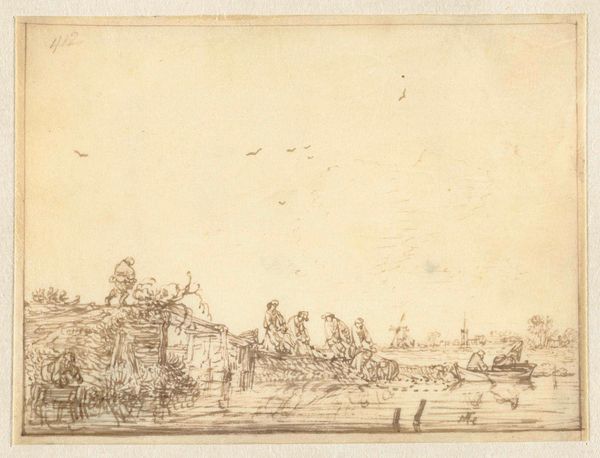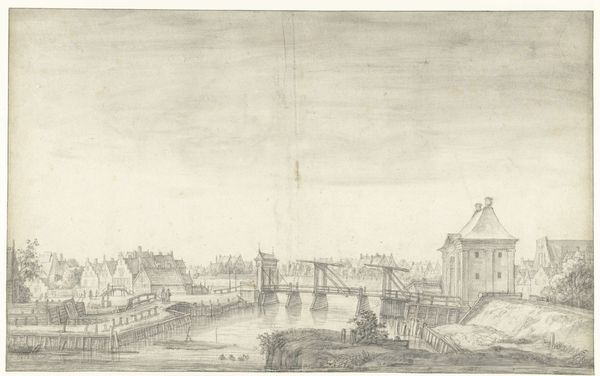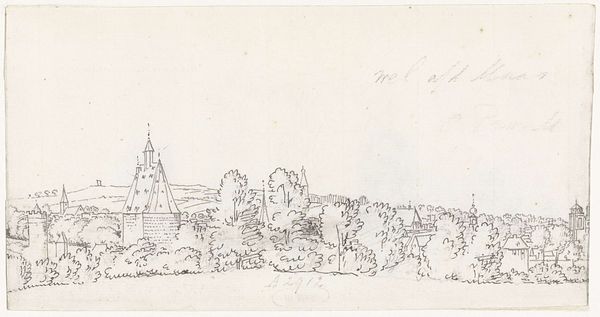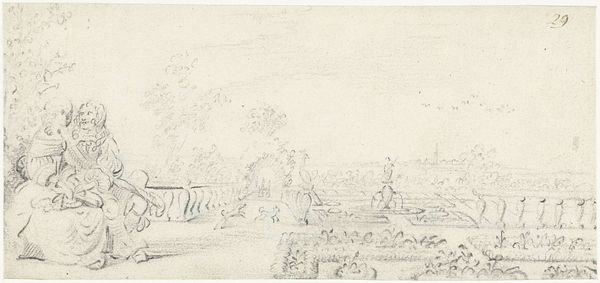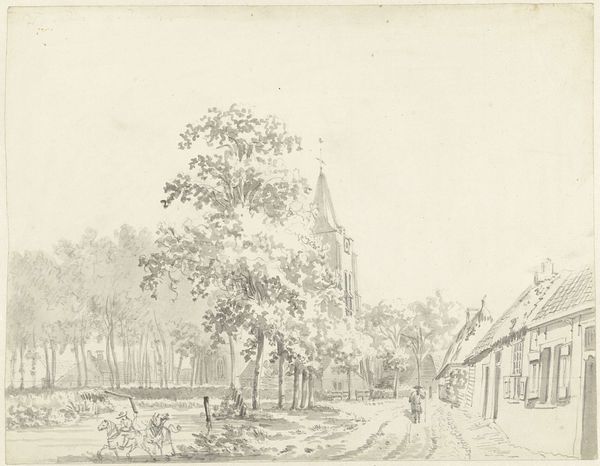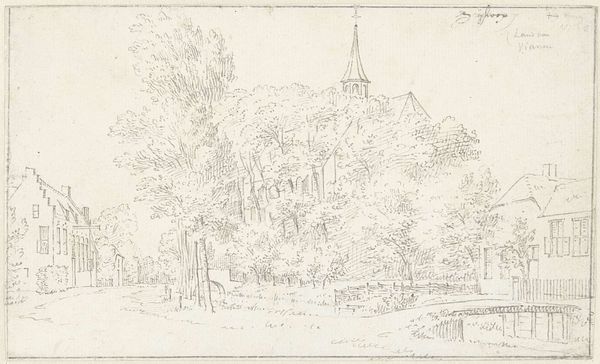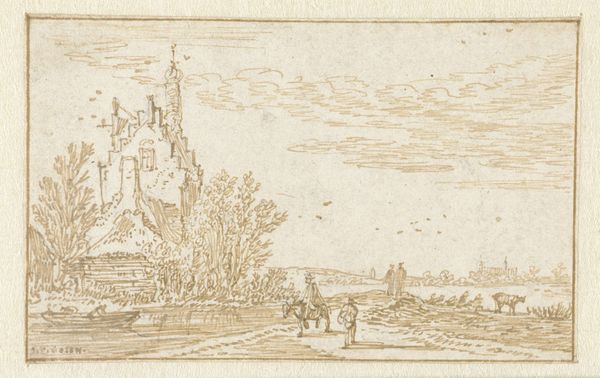
drawing, paper, ink
#
drawing
#
landscape
#
paper
#
ink
#
cityscape
#
realism
Dimensions: height 180 mm, width 300 mm
Copyright: Rijks Museum: Open Domain
Jacob van Liender created this pen and ink drawing of the Weerdpoort outside Utrecht around 1740. Liender carefully depicts the gate, bridge and surrounding buildings. But he also gives us insight into the social and institutional conditions that shape artistic production. In 18th century Netherlands, topographical drawings like this one served multiple functions. They documented the landscape, of course, but they also appealed to a growing middle class interested in images of their cities and countryside. Artists like Liender found a market for their work by catering to this demand. The level of detail suggests that Liender likely used printmaking techniques, which shows the cultural importance of reproducing and distributing images. The drawing reflects the values of a society that placed a high value on accuracy, detail, and the beauty of its surroundings. To understand this work further, we can consult historical maps, city records, and period guidebooks. These resources help us understand the social and institutional context that shaped not only the production of this drawing, but also its meaning.
Comments
No comments
Be the first to comment and join the conversation on the ultimate creative platform.
